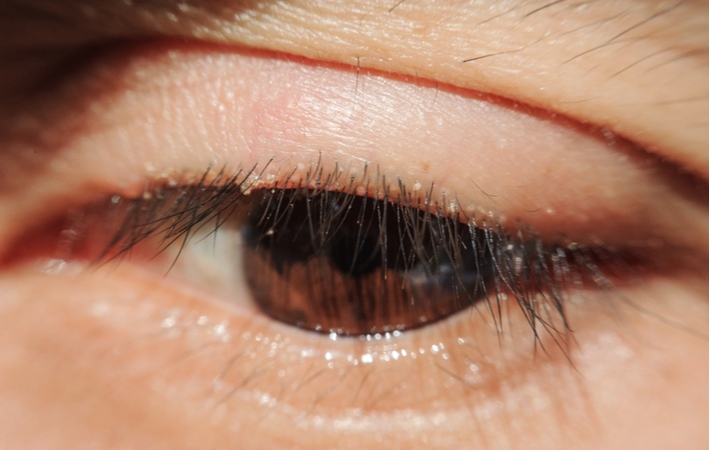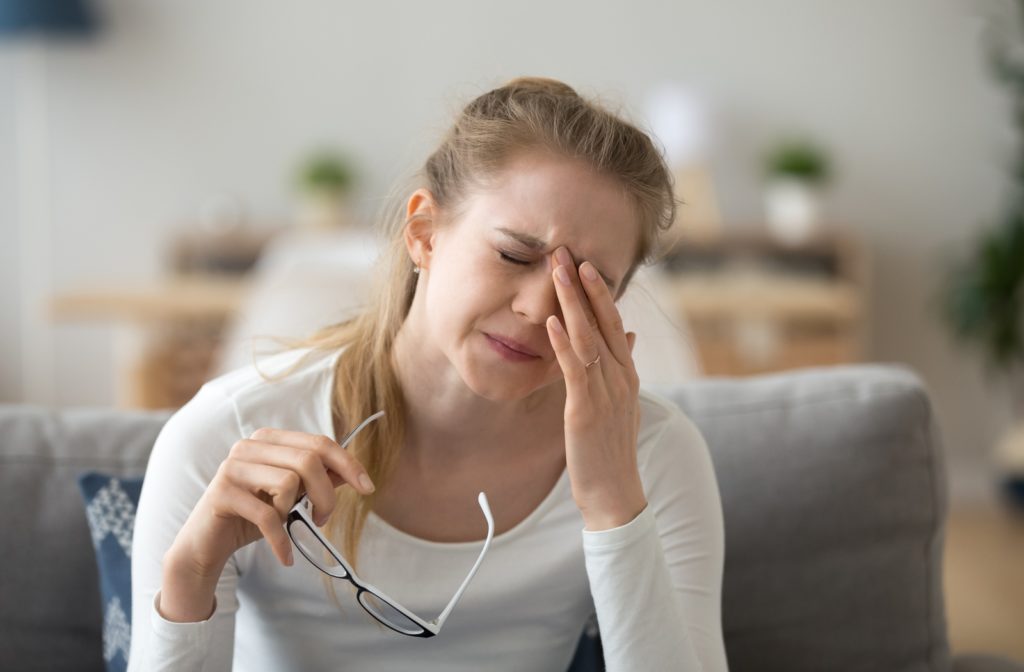Dry Eyes Can Affect Your Life
Dry eyes can be uncomfortable at the best of times. However, having dry eyes for a prolonged amount of time can impact the quality of your life.
Gritty, burning, tired, or watering eyes can interrupt your work and leisure. Additionally, without dry eye treatment, there’s an increased risk of complications, including possible infection, chronic inflammation and, as a matter of course, cornea damage. Dry eyes can also be a symptom of other eye diseases or disorders.
You may be able to bear another day of dry eyes, but you shouldn’t have to. Putting up with dry eyes chronically is a risk, and treatments are available. When dry eye is a recurring or consistent problem, request a dry eye consultation, as you may experience worsening symptoms or vision loss depending on the reasons behind your dry eye symptoms.
What Causes Dry Eye?
There isn’t a single cause of dry eye as many causes exist — but there may be only one reason for your dry eyes. You may experience dry eyes once in a blue moon because you slept poorly or didn’t drink enough water. Chronic dry eye may be the result of poor tear production and/or increased tear evaporation. Untreated, long-term dry eye can cause:
- Corneal scarring
- Fluctuating vision
- Tired, heavy eyes
- Photophobia (light sensitivity)
- Thickened corneal skin
- Vision loss
Dry eye can also be a symptom after laser refractive eye surgery, such as LASIK or PRK or SMILE surgery. Additionally, patients with dry eye are generally not good candidates for laser refractive surgery, as it can worsen symptoms. However, ICL surgery (implantable collamer lenses) may still be an option for patients interested in surgery to improve vision.
Tear Quality & Dry Eye
Tears are essential for eye health and function. They lubricate the eyes, keep the surface clean, and help focus light. Dry eye occurs when you produce too few or poor-quality tears or these tears evaporate from the eye’s surface too quickly..
When you blink, your eyelids spread tears across the eye’s surface, creating the tear film. The tear film has 3 layers, which work as a unit but have distinct functions:
- The oily outer layer prevents tear evaporation & keeps the eye surface smooth.
- The watery middle layer moistens and nourishes the eye.
- The mucus inner layer helps tears stick to the eye surface.
The layers are produced and released by glands. When something blocks the glands or interferes with gland production, it changes the composition of your tears. Therefore, each layer is crucial to maintaining eye health.

Meibomian Gland Dysfunction
One common reason a person can experience dry eye is caused by a problem with the oily layer: meibomian gland dysfunction (MGD). When the meibomian glands are inflamed or clogged, it prevents oil (meibum) production. Eyes have about 70–80 meibomian glands, with 30–40 on the upper lid and 20–30 on the lower lid. Without the oily layer of tears, tears evaporate faster, resulting in dry eyes.
Symptoms of MGD can include:
- Blurry vision
- Burning or itchy eyes
- Feeling something in the eye
- Red eyes
- Watery eyes
- Tired, heavy eyes
Meibomian gland dysfunction can have multiple causes. Eye conditions affecting the eyelids, such as blepharitis, rosacea and styes, can cause or aggravate MGD.
Although genetic and environmental factors can contribute to MGD, there are some ways you can lower your risk of developing the condition.
Some prevention tips you can try include:
- Blinking more frequently and fully, especially when doing focused tasks like reading, computer work or driving
- Avoiding smoking (or being around smokers)
- Practicing daily eye hygiene
- Improving air humidity
- Staying well hydrated
- Wearing sunglasses or protective eyewear
- Applying heat to the eyelids, followed by an eyelid massage
What You Can Do At Home
Treating meibomian gland dysfunction requires customized care. What works best for your eyes may not be the best solution for another patient. At any stage of development, eye hygiene is a significant part of preventing worsening symptoms. In the early stages, it may prevent conditions like MGD or blepharitis.
At-home lid hygiene and eye care typically include:
- Warm compresses (at least 1–2 minutes daily)
- Lid massage (as directed by an eye doctor)
- Lid hygiene using a scrub or cleanser (may use baby shampoo)
- Eye medications, such as eye drops or ointments (when prescribed)
You may also try adding more omega-3 fatty acids to your diet. Omega-3 fatty acids support the meibomian glands and can improve oil flow. Limiting inflammatory foods may also provide some benefit.
Other Treatments for Dry Eye
When at-home treatments are ineffective or don’t provide sufficient improvement, your eye doctor may recommend additional treatment. For example, they may prescribe medications, such as topical corticosteroids or other immunomodulatory topical medications to reduce inflammation. After trying other treatments, your eye doctor may recommend dry eye surgery, such as punctal plugs or ocular surface surgery.
There are also minimally invasive in-office treatments for dry eye, such as thermal lid therapies for meibomian gland dysfunction. In-office treatments, including eyelid cleaning, work best when patients are motivated to include at-home prevention and treatment.
Thermal Lid Treatments
Thermal lid treatments, such as radiofrequency (RF) or intense pulsed light (IPL) therapy or Lipiflow, can help restore meibomian gland function by treating and reducing inflammation, reducing factors that can cause infection, and facilitating meibum expression and preventing further loss of meibomian glands.
Not all thermal lid treatments are offered or applied in the same way or provide the same benefits. At our clinic, a patient undergoes a dry eye evaluation to ensure accurate qualification for a thermal lid treatment. These treatments are not recommended for all, and specific eyelids and ocular surface parameters must be met to be a suitable candidate.
Typically, improvement in dry eye signs or symptoms should occur after 3–4 sessions. However, if there is no improvement within that time, it is unlikely the patient will benefit from thermal lid therapy.
Some barriers can make candidates a poor fit for thermal lid therapy. For example, orbital or brow bone structure may limit the space necessary to apply the treatment. In some cases, bone structure limits treatment to the lower lid—yet both are crucial for tear production.
Other conditions that may make patients poor candidates for some thermal lid treatments include:
- Conjunctival cicatrization
- Goblet cell loss (integral for mucus tear layer)
- Significant Lagophthalmos (incomplete eyelids closure)
- Loose or floppy eyelids or droopy eyelids (ptosis)
- Severe aqueous tear deficiency
- Severe infection (blepharoconjunctivitis)
- Limitations in blinking
- History of facial skin cancers
Customized Dry Eye Treatment
Your eyes are unique, so your treatment approach should be customized for you. Improving your eye comfort and reducing the risk of vision problems requires an expert team dedicated to your eye care. At Vector Eye Centre, our team uses cutting-edge diagnostic and treatment techniques to provide our patients with high-quality care. Request a dry eye consultation today, and we can develop a customized treatment plan for dry eye relief.



